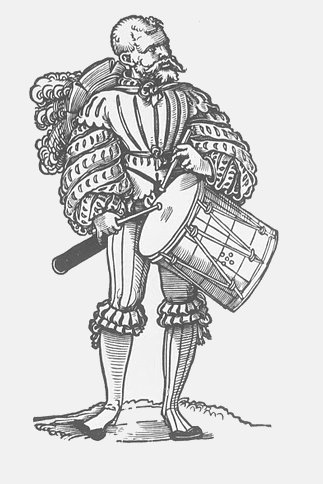
A suit of early 16th Century armour, reputed to be that of the Chevalier Bayard, and now preserved in the Tower of London (Department of the Environment).

An Italian 16th Century Burgonet (top) and another typical helmet, the Morion (bottom).


 A suit of early 16th Century armour, reputed to be that of the Chevalier Bayard, and now preserved in the Tower of London (Department of the Environment). |
 An Italian 16th Century Burgonet (top) and another typical helmet, the Morion (bottom). |
 A group of German Lansknechts, from The Triumph of the Emperor Maximilian (Hans Burkmar, 1473-1531). |
 A Lansknecht drummer, by Hans Sebald Beham, 1540 Germanisches Nationalmuseum, Nurnburg |
 16th Century Muscovite horse archers. |
 Gothic cavalry armour of the 15th Century (Wallace Collection). |
|
Next: Part 2: Infantry weapons and organisation by George Gush Return to Contents of Renaissance Warfare by George Gush (Airfix Magazine Articles) |